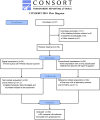Accuracy of Intraoral Digital Impressions for Whole Upper Jaws, Including Full Dentitions and Palatal Soft Tissues
- PMID: 27383409
- PMCID: PMC4934918
- DOI: 10.1371/journal.pone.0158800
Accuracy of Intraoral Digital Impressions for Whole Upper Jaws, Including Full Dentitions and Palatal Soft Tissues
Abstract
Intraoral digital impressions have been stated to meet the clinical requirements for some teeth-supported restorations, though fewer evidences were proposed for larger scanning range. The aim of this study was to compare the accuracy (trueness and precision) of intraoral digital impressions for whole upper jaws, including the full dentitions and palatal soft tissues, as well as to determine the effect of different palatal vault height or arch width on accuracy of intraoral digital impressions. Thirty-two volunteers were divided into three groups according to the palatal vault height or arch width. Each volunteer received three scans with TRIOS intraoral scanner and one conventional impression of whole upper jaw. Three-dimensional (3D) images digitized from conventional gypsum casts by a laboratory scanner were chose as the reference models. All datasets were imported to a specific software program for 3D analysis by "best fit alignment" and "3D compare" process. Color-coded deviation maps showed qualitative visualization of the deviations. For the digital impressions for palatal soft tissues, trueness was (130.54±33.95)μm and precision was (55.26±11.21)μm. For the digital impressions for upper full dentitions, trueness was (80.01±17.78)μm and precision was (59.52±11.29)μm. Larger deviations were found between intraoral digital impressions and conventional impressions in the areas of palatal soft tissues than that in the areas of full dentitions (p<0.001). Precision of digital impressions for palatal soft tissues was slightly better than that for full dentitions (p = 0.049). There was no significant effect of palatal vault height on accuracy of digital impressions for palatal soft tissues (p>0.05), but arch width was found to have a significant effect on precision of intraoral digital impressions for full dentitions (p = 0.016). A linear correlation was found between arch width and precision of digital impressions for whole upper jaws (r = 0.326, p = 0.034 for palatal soft tissues and r = 0.485, p = 0.002 for full dentitions). It was feasible to use the intraoral scanner to obtain digital impressions for whole upper jaws. Wider dental arch contributed to lower precision of an intraoral digital impression. It should be confirmed in further studies that whether accuracy of digital impressions for whole upper jaws is clinically acceptable.
Conflict of interest statement
Figures







Similar articles
-
Accuracy of complete-arch dental impressions: a new method of measuring trueness and precision.J Prosthet Dent. 2013 Feb;109(2):121-8. doi: 10.1016/S0022-3913(13)60028-1. J Prosthet Dent. 2013. PMID: 23395338
-
Deviations in palatal region between indirect and direct digital models: an in vivo study.BMC Oral Health. 2019 Apr 27;19(1):66. doi: 10.1186/s12903-019-0751-3. BMC Oral Health. 2019. PMID: 31029133 Free PMC article.
-
Full arch scans: conventional versus digital impressions--an in-vitro study.Int J Comput Dent. 2011;14(1):11-21. Int J Comput Dent. 2011. PMID: 21657122 English, German.
-
Digital versus conventional full-arch impressions in linear and 3D accuracy: a systematic review and meta-analysis of in vivo studies.Clin Oral Investig. 2022 Sep;26(9):5625-5642. doi: 10.1007/s00784-022-04607-6. Epub 2022 Jul 4. Clin Oral Investig. 2022. PMID: 35786783
-
Accuracy of full-arch digital implant impressions taken using intraoral scanners and related variables: A systematic review.Int J Oral Implantol (Berl). 2021 May 12;14(2):157-179. Int J Oral Implantol (Berl). 2021. PMID: 34006079
Cited by
-
Intraoral Scanner Technologies: A Review to Make a Successful Impression.J Healthc Eng. 2017;2017:8427595. doi: 10.1155/2017/8427595. Epub 2017 Sep 5. J Healthc Eng. 2017. PMID: 29065652 Free PMC article. Review.
-
Effect of various surface treatments on relining bond strength of CAD-CAM denture base materials.J Prosthodont. 2025 Apr;34(4):422-428. doi: 10.1111/jopr.13831. Epub 2024 Feb 18. J Prosthodont. 2025. PMID: 38369895 Free PMC article.
-
Evaluation of the Palatal Features in Relation to Graft Harvesting in the Saudi Population.Medicina (Kaunas). 2025 Jan 7;61(1):82. doi: 10.3390/medicina61010082. Medicina (Kaunas). 2025. PMID: 39859064 Free PMC article.
-
Enhancing Intraoral Scanning Accuracy: From the Influencing Factors to a Procedural Guideline.J Clin Med. 2025 May 20;14(10):3562. doi: 10.3390/jcm14103562. J Clin Med. 2025. PMID: 40429557 Free PMC article. Review.
-
Comparison of Adaptation between the Major Connectors Fabricated from Intraoral Digital Impressions and Extraoral Digital Impressions.Sci Rep. 2018 Jan 11;8(1):529. doi: 10.1038/s41598-017-17839-4. Sci Rep. 2018. PMID: 29323129 Free PMC article. Clinical Trial.
References
MeSH terms
Substances
LinkOut - more resources
Full Text Sources
Other Literature Sources

